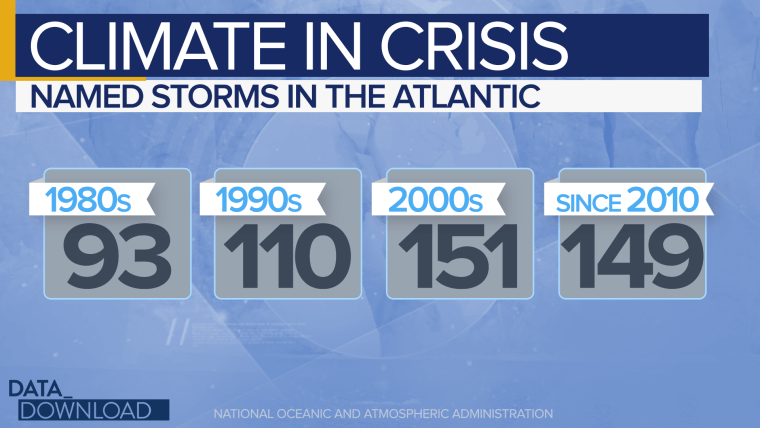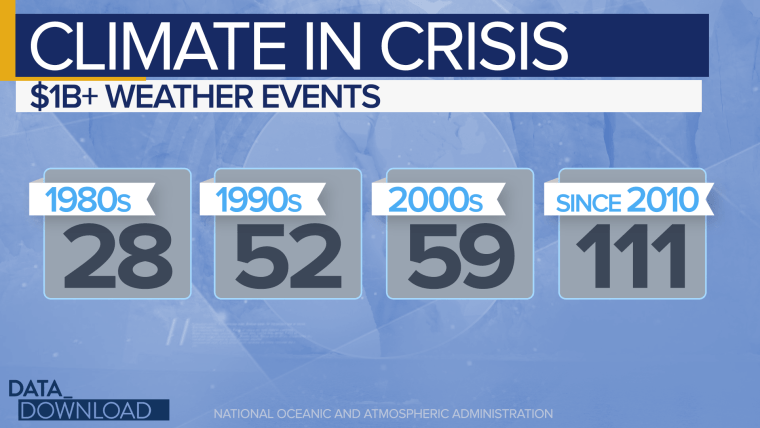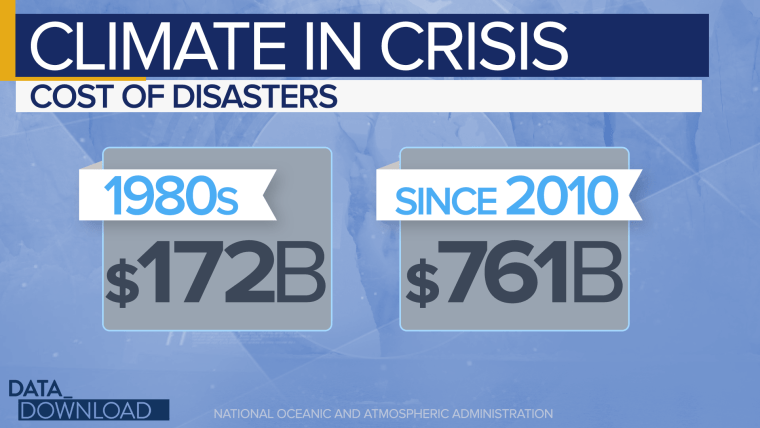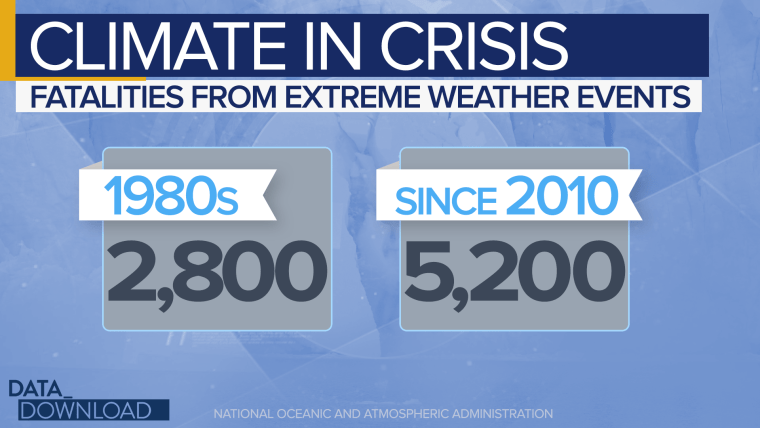WASHINGTON -- Two weeks ago it was Hurricane Dorian. This week Tropical Storm Humberto is working its way through the Atlantic toward Florida and there are several other systems behind it. If it feels like big weather events are becoming more common in the last few decades, it’s because they are -- and it’s not just hurricanes.
Since 1980, National Oceanic and Atmospheric Administration data show extreme weather events are starting to pile up with big impacts on people and property. And as the climate debate rages on in Washington, those are the kind of impacts that seem likely to catch the attention of politicians.
Start by looking at the topic on everyone’s minds this time of year, hurricanes and tropical storms.

Since the 1980s, the number of tropical depressions getting big enough to acquire a name has been growing pretty steadily –- systems receive names when they become strong enough to be tropical storms.
There were 93 named storms in the Atlantic in the 1980s. There were 110 named storms in the Atlantic in the 1990s and a whopping 151 in the first decade of this century. The tally sits at 150 for the current decade and we are still at the peak of the 2019 season.
The number of major hurricanes, above category 3, is also up since 1980, though down a bit from the last decade (so far).
But the growth of extreme weather extends beyond hurricanes. An analysis of weather disasters that did more than $1 billion in damage from the National Centers for Environmental Information finds that such high-cost events are up markedly since the 1980s. (The dollar figures for the events were adjusted for inflation.)

There have been 250 such events since 1980 and almost half them, 111, have occurred in the current decade. And the 2019 figure does not include any events after May, so Dorian is not on the list yet. There were only 28 billion-dollar weather events in the 1980s.
There is a wide range of events in that extreme weather calculation. Besides hurricanes, it includes floods, droughts, freezes, severe storms, wildfires and winter storms. And there are some trends in the data.
For instance, there were seven freeze/winter storm events on the list in the 1980s, but only six (so far) in the current decade. But there were only seven severe storms on the 1980s list and 64 in the current decade.
But the most consequential trend in the eyes of Washington, might be the costs associated with these events.

The 28 high-impact weather events in the 1980s cost a total of about $172 billion in inflation-adjusted dollars. But the current set of 111 storms this decade has cost a total of more than $761 billion dollars. Again, that does not include the costs of Dorian and of two other events on the list – the March floods in the Midwest and May floods of the Southern Plains.
When you tally it all up, the costs are likely to end up at three-quarters of a trillion dollars or more. And that’s just for this decade. At this pace, the number seems all but certain to climb over the trillion-dollar mark in the 2020s.
And then there are the human costs. The number of fatalities from these extreme weather events has largely been climbing –- from 2,800 in the 1980s to almost 5,200 this decade (again before Dorian’s damage is added in).

There could be forces at play under those data: more expensive homes and buildings being hit leading to higher costs in some places, poor construction leading to more deaths in others. Maybe communities are building too much in places that are too prone to dangerous weather events.
But the reasons are largely moot.
The numbers show much more in the way of financial damage and lives lost this decade than in the past. Those are the kind of numbers that upset constituents and those concerns tend to make their way up to lawmakers and ultimately spur action.
You may not want to talk about global environmental changes, but if you represent Florida or Texas or North Carolina voters are going to want to talk to you about increasing hurricane risk and damage. If you represent Iowa or Nebraska or Kansas, you can bet your constituents are going to have floods and droughts on their minds. If serve the good people of California or Montana or Colorado, chances are you are going to hear about wildfire risks.
Climate change is the kind of large-scale topic Washington likes to talk to death, but growing real-world dollars-and-cents impact of severe weather events is harder to ignore. And the evidence for it is mounting.